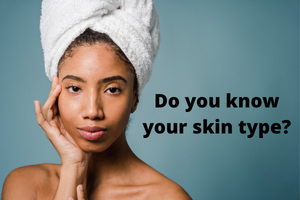Retinoids are a group of compounds derived from vitamin A ; they can be natural or synthetic.
If you are passionate about skincare , for sure you heard about retinoids. Held in high regard by dermatologists and estheticians, retinoids are the kings of skincare for good reason.
Whether you’re fighting acne, dark spots or trying to improve the look of fine lines and wrinkles, there is a type of retinoid fit for your concern. But like anything in life , there is a down side to it: redness, irritation, peeling or even purging(a temporary worsening of acne, due to the increased cell turnover) are part of the retinization process.
There a four main types of retinoids: retinoic acid, retinaldehyde, retinol and retinyl esters.
Even all forms provide amazing benefits not all retinoids are the same.
Types of retinoids:
Retinoic acid
Is the active ingredient that binds to and activates retinoic acid receptors within our skin. It is the strongest and purest form of retinoid that your skin can use directly upon absorption. It comes in a form of gel or cream in .025 percent, .05 percent, and 0.1 percent concentrations. In USA is available by prescription only with the exception of adapalene which is over the counter.
Examples of retinoic acid: Tretinoin (brand name Retin-A or see list), Isotretinoin(Accutane), Tazarotene(Tazorac) , Adapalene (Differin)
Retinaldehyde
Frequently referred as retinal, retinaldehyde is next in line of strength. It requires a conversion process into retinoic acid before your skin can benefit from it.

Retinol esters (derivatives) are the weakest form of retinoids. It requires a 3 step conversion by our skin to reach the state of retinoic acid(the active ingredient that provides all the benefits).
Retinol is the next in strength; it requires 2 step conversion.
If I was to pick just one component in my skincare routine, a retinoid would be it, and that is because a retinoid is an ingredient that treats multiple concerns. So no matter if you’re trying to treat signs of aging, wrinkles, acne, or hyperpigmentation(sunspots), retinoids are the answer.
Retinoids increase collagen production within our skin, making the wrinkles less visible and speeding up our cell turnover rate. Helps fade dark spots ( melasma or sun damage) by inhibiting the melanin production(pigment) and controlling the overproduction of sebum responsible for clogged pores and acne. It even has antibacterial properties in some measure, not by killing the bacteria itself but by creating an unsuited environment to grow, which helps a lot when dealing with acne.
With so many benefits, why isn’t everybody using it? The adjusting period in which the skin adapts to a retinoid treatment (a process called retinization )has its challenges. Increased dryness, irritation, peeling, and sometimes purging(temporary worsening of acne) are the most common side effects. Still, the process is manageable with patience, and it takes approximately 2-3 months.
When choosing the best retinoid, your skin tolerance plays a critical role. The strongest does not always equal the greatest.
The best retinoid is the one that your skin tolerates (after the retinization process is over)without any irritation, redness, or excessive dryness. Don’t worry; even the lower strengths give you tremendous benefits.
The general rule of retinoids is to incorporate them into your nighttime routine since they are photosensitive.
Here are some tips on how to adjust your skin to retinoids with minimal side effects:
- Temporarily discontinue other active ingredients, such as vitamin C or chemical exfoliants( alpha-hydroxy acids, beta hydroxy acids) if you have them in your routine
- Begin with the weakest form
- Start applying it every other day or even every 2 days and gradually increase the number of applications (even 3x-4x week is enough to give you the benefits)
- Use only a pea-size amount of the product for your entire face
- Apply it on dry skin(applying it on damp skin increases the penetration leading to more irritation)
- Use “the sandwich” method. Cleanse-apply moisturizer-wait until absorbed-retinoid-moisturizer again
- Always apply sunscreen in your AM routine to protect that fresh skin you just reviled by using a retinoid.
Anything I might have missed?
What type of retinoid are you using?
What issues did you encounter adjusting your skin to retinoids?
Tell me about it by leaving a comment below.
Retinol
Lorem ipsum dolor sit amet, consectetur adipiscing elit. Ut elit tellus, luctus nec ullamcorper mattis, pulvinar dapibus leo.

Retinol Esters (derivatives)
Lorem ipsum dolor sit amet, consectetur adipiscing elit. Ut elit tellus, luctus nec ullamcorper mattis, pulvinar dapibus leo.

Granactive Retinol
Lorem ipsum dolor sit amet, consectetur adipiscing elit. Ut elit tellus, luctus nec ullamcorper mattis, pulvinar dapibus leo.




